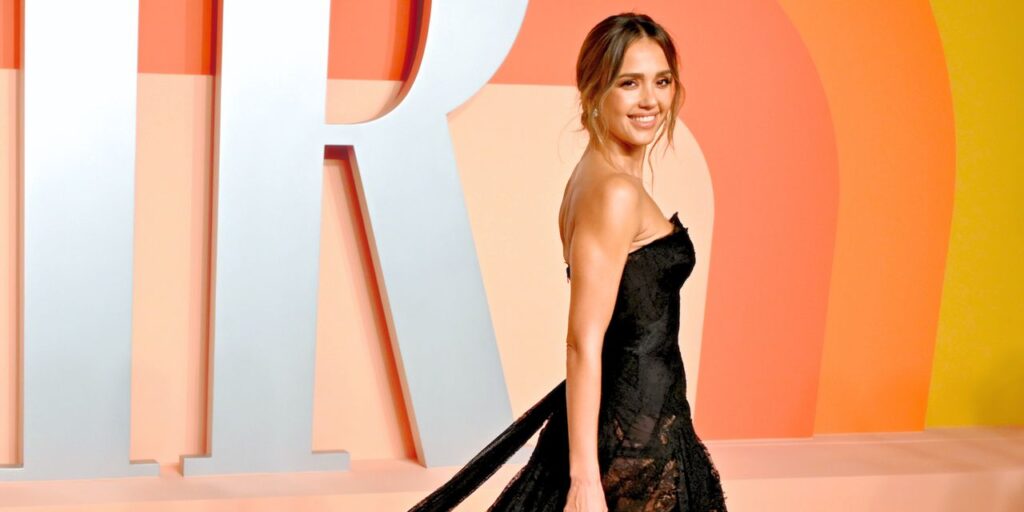When Jessica Alba dropped a video of her full-body morning workout on Instagram yesterday, we couldn’t help thumbs-upping one move in particular: the bird-dog row. In a world where time is often of the essence and hours-long routines don’t fit in many of our schedules (nor are they the best way to get results!), this exercise plays double (or more) duty and offers a whole lot of bang for your workout buck.
Alba’s routine—with Nike global trainer Betina Gozo Shimonek—consists of two full-body trisets (three exercises stacked together), sandwiched between a warm-up to wake up her core and lower body, and a high-energy finisher (hello, med ball slam!) to crank up her heart rate and build explosive power. Then it’s all rounded out by a cool-down to bring it back to baseline. Her trisets include tried-and-true staples like Bulgarian split squats and Copenhagen planks, as well as a few combo exercises, like the single-leg glute bridge hold with chest press, tall kneeling curl to overhead press, and, of course, the bird-dog row.
Let’s take a minute to break down that last one. Here at SELF, we’re a big fan of this move—so much so that we slotted it into our strength workouts for our recent Learn to Love Running Program. Why? A whole lot of reasons, which, as an ACE-certified personal trainer, I’m happy to share, in the hopes that it just may become a personal fave for you, too.
First of all, a bird-dog row is exactly as it sounds: It’s a bird-dog combined with a row. With bird-dog, you get into tabletop position and then extend one arm and the opposite leg. Because that removes the base of support, all of your core (your rectus abdominis, obliques, transverse abdominis, and even pelvic floor) has to really fire to keep you from tipping over. To be super technical, it’s considered an anti-rotational core exercise, since the muscles are working to keep you from leaning side to side.
When you add a row, you’ll simply grab a dumbbell in the hand opposite the leg you extend, and perform the move by pulling the weight toward your ribs, almost like you’re putting something into your pocket. The addition of the weight not only ups the core challenge, but it also brings in more upper-body work too: Like with any row, you’ll really target your lats (your broadest back muscle), rhomboids (upper back muscles between shoulder blades), and biceps (the front of your upper arms). If you’re looking to improve your posture, a strong back of the body is huge for preventing that forward shoulder hunch.
So, why exactly do we love this combo? It’s just a super functional way to train. You need a strong core in all directions to be better able to do lots of activities in life (just think about carrying heavy grocery bags up the stairs to your apartment—you need the core stability so you don’t fold over to one side). It also provides a solid foundation for running or the moves you do at the gym. Whenever you’re deadlifting or pressing overhead, for instance (both moves in Alba’s routine), a strong core helps you transfer energy so the correct muscles can get ‘er done. Finally, for folks who aren’t a fan of traditional core work and tend to skip out on it (it me), this move makes sure you’re getting that work in while showing your upper-body some love, too.


